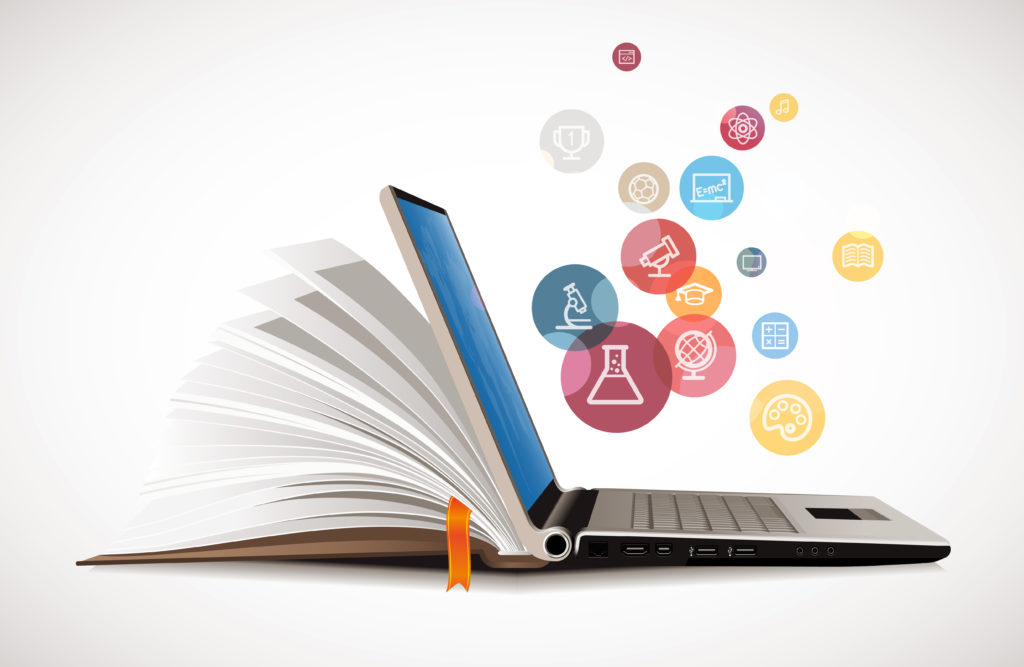
Recent reports issued by LearnPlatform show that the use of ed-tech content products rose to 32.5 percent in the 2018-19 school year. This is a 10 percent increase from the previous year. An overall increase in technology tools is no surprise, but the increased use of content products is something to notice.
First, educators are focusing on content products that provide actual works for student consumption. This is based on the fact that assessment and reference product use has decreased. In a summary article issued in EdWeek, it notes the decrease as only 5 percent but it’s still a notable decline. This may be due to the ever-changing assessment requirements or state standard shifts. Regardless, educators seem to be focusing on products that add instructional value to their students over those designed to assess them.
Next, the increase in desire for content products has also led to an increase in product options. More and more companies are developing products that bring content to educators and students. The number of competitive elearning companies grows each year. This has created a number of expert lists that highlight the best current content development products. These lists help to set education products apart from each other to help educators choose the best products.
With so many products available to educators, it’s important to understand why educators use content products. Product creators can make better decisions to improve the content products they create by understanding how and why they are used.
Here is a look at why educators are turning to ed-tech content products to help reach their students and enrich their classrooms.
Content Products help with Differentiation
Differentiation is the key to being able to reach as many students as possible and educators no strangers to this need. In fact, being able to differentiate instruction for their students is one of the main reasons educators are turning to content products.
According to an article issued by DreamBox Learning, educators better achieve differentiated instruction by using high-quality digital content. Accordingly, this is due to the ability to have access to different content with notable data. The content and data are used to meet specific student needs so students are not just exposed to a one-size-fits-all approach.
To fully cover differentiation, teachers need to provide students with access to information for different learning styles, interests, and abilities. In a previous blog post on how to engage students with content, we mention that having access to choices increases a student’s interest in learning. This is essential in differentiated instruction.
Content Products help Educators Teach
Educators have a long list of instructional requirements they have to consider every single day. Not only do educators need to consider student learning, but they also have to keep government requirements in mind. Add in changing student interests and education needs, educators can sometimes struggle to meet all of these expectations.
Content products help educators meet all of their requirements and make instructional and content decisions. Access to a broad range of materials provides educators with the variety they need to present options to their students. This helps students learn and educators teach more effectively.
Content Products help Schools Remain Current in Technology and Literature
Technology, art, and literature are all things that continue to grow and evolve. These three elements even contribute to the evolution of each other. As technology changes society shifts, and this creates a shift in art and literature. As changes happen, the need for schools to adapt along with technology and literature also evolves.
Schools struggle to stay current on a sometimes limited budget. This is where education content products offer a large amount of assistance. As technology and literature change, the content in products needs to respond. When schools have access to adaptive content products they are able to stay current on these changes. This not only keeps educators abreast of new technology, but it provides students with new and effective content.
The rise in educational content product use links to educator and student needs. The reasons listed above are a small sample on why educators choose to use content products. For K-12 developers, access to services like CurationIQ help products achieve all of these goals.
CurationIQ is designed to connect K-12 product developers with current, innovative, and interesting content. If you’d like to see how CurationIQ can help your product stand out, give it a try! Sign up for a free developer login and explore what MOSAIQ’s CurationIQ has to offer.
